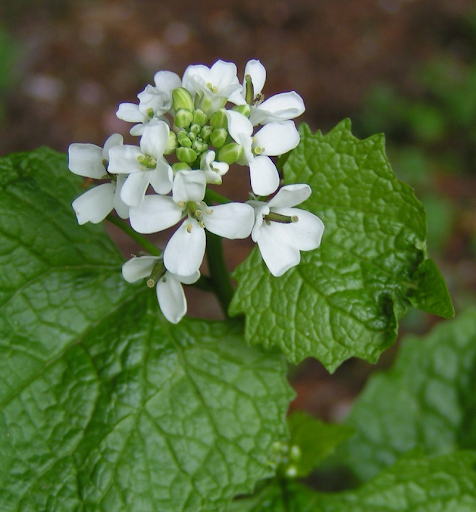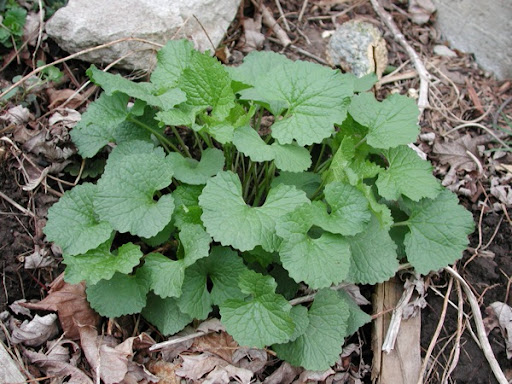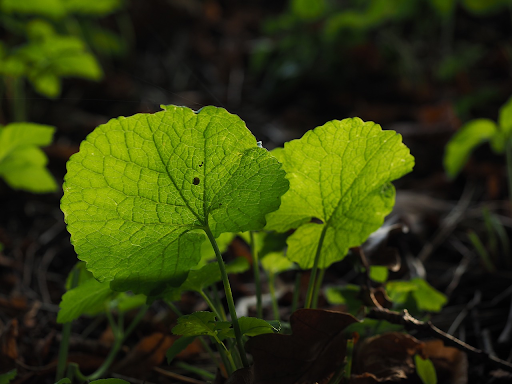Herbaceous biennial, with vegetative rosette in the first year. Leaves 2-12 cm wide, dark green, kidney shaped, smelling of garlic when crushed, margins scalloped. Taproot is thin, deep, and white. Second year plant extends a hairy flowering stalk up to 1m tall bearing alternating triangular leaves 3-8 cm long with toothed margins and small, four-petaled white flowers in unbranched or weakly branched clusters. Flowers in May through August. Long (2.5 – 6 cm) seed pods (siliques) containing 10-20 small black seeds in two rows, grey at maturity. Single plants commonly produce 600 seeds.
Readily invades habitats both disturbed and undisturbed by humans, especially along paths and fence lines where humans and animals help disperse their seeds. Tolerates full sun to full shade. Slightly intolerant of acidic conditions. Prefers calcium-rich soil, partial shade, and damp soil. In Ontario, can invade and reduce the biodiversity of old growth forests in five years. Forms dense stands in early spring – hogging resources and shading out slower native species. Sabotages competitor species by harming their mycorrhizal partnerships with anti-fungal secretions. Inedible to deer, encouraging over-browsing of native species.
Introduced by European settlers in the 1800’s as a garden herb high in vitamins A and C.

Garlic smell in new leaves; small, 4-petal white flowers; sharply toothed leaves.



When dairy cows eat garlic mustard their milk becomes unusable due to the garlic flavour.
Promote the use of beautiful, non-invasive herbs. Humans and animals are the main seed dispersal vector for this invasive, so be sure to stick to the trails in natural areas and clean off gear and pets before and after hiking. If removing garlic mustard from private property be sure not to burn or compost the plant, but instead double bag it and leave it in the sun to rot, then discard. Easiest to remove in its first year. If you spot this invasive species, report the location to iNaturalist or directly to the NSISC.